Uncover the mathematical foundations behind Egyptian pyramids. Learn about the Sacred Triangle of Egypt, a right triangle with dimensions 3, 4, and 5. Explore the practical use of these triangles in constructing pyramids, including formulas for calculations. Discover notable pyramids built on Sacred Triangle principles, showcasing the intersection of mathematics and architecture in ancient Egyptian civilization.
Personal Blogs
The
Carved Stone Balls of Scotland,
mysterious Neolithic artifacts, take center stage in this article, offering
insights into their history and perplexing characteristics. Crafted with skill
and patience over 5000 years ago, these oval stones with knobs and patterns
remain shrouded in mystery. The article explores their possible connections to
the Picts, theories about their uses as symbols of power, ritual tools,
weapons, weights, and even Platonic Solids. Despite various hypotheses, the
true purpose of these enigmatic stones remains elusive.
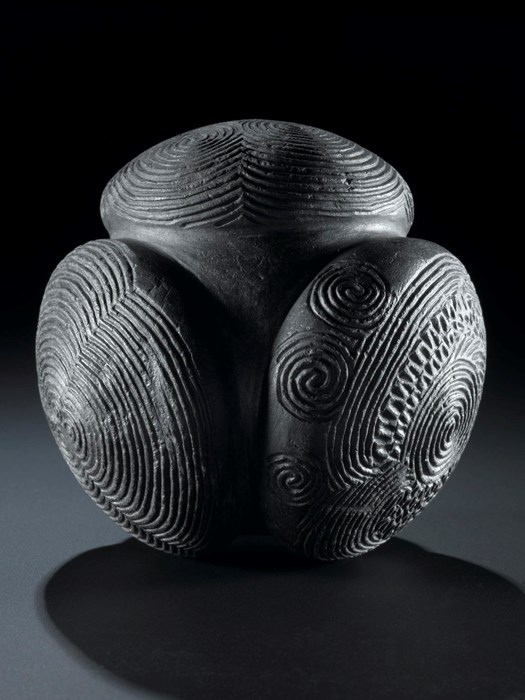
Delve into the world of Whistling Jars, also known as Huaco Silbador, unique ceramic musical instruments from ancient Peru. Uncover their origins, ceremonial significance, and the hauntingly beautiful sounds they produce. Discover the cultural and historical context surrounding these enigmatic artifacts.

The Phaistos Disc, discovered in 1908 at the Minoan palace of Phaistos, Crete, has sparked controversy and fascination for over a century. Composed of fired clay and adorned with mysterious symbols, its authenticity and meaning have been subjects of intense debate. Theories range from it being a record of political administration to a communication tool from extra-terrestrial beings. Despite challenges in deciphering its symbols, recent claims suggest progress, yet the disc's true purpose remains elusive.
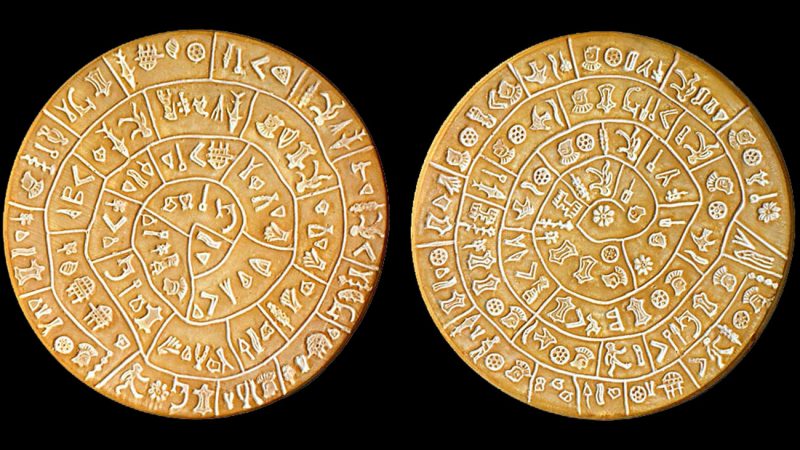
Explore the mysterious world of the Aztecs and their intricate religious practices involving the enigmatic Aztec Death Whistle. This pre-Columbian musical instrument, shaped like a skull, played a vital role in honoring the dead and communicating with the gods during human sacrifices. Uncover the whistle's origins, its haunting sound, and its recent resurgence in popular culture.
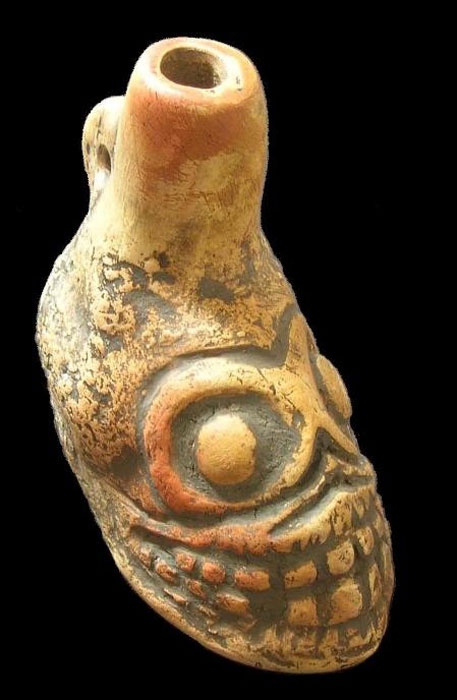
Scaphism, known as 'the boats,' was an ancient Persian method of execution that still sends shivers down our spines. Victims were tightly confined between two narrow boats, force-fed a concoction of milk and honey, and left to rot in stagnant water, attracting insects and maggots.
Whether fact or myth, Scaphism stands as a chilling reminder of the depths of human cruelty in the annals of history. 😨💀 #Scaphism #DarkHistory"
The Coso Artefact, an intriguing archaeological discovery found in the 1960s in the Coso Mountains of California, has sparked intense debates and speculations about its origin and age. This so-called OOPArt (out-of-place-artefact) appeared to be a spark plug encased in solid rock and was estimated to be over 500,000 years old. The object was discovered during mineral prospecting by Wallace Lane, Virginia Maxey, and Mike Mikesell. Inside the rock, they found a spark plug composed of ceramic and metal components, suggesting it had been used before becoming embedded in the rock.
The discovery gained widespread attention in the paranormal community and led to various theories, including the possibility that it belonged to an advanced ancient civilization or was evidence of time travel. Some even questioned the traditional understanding of rock fossilization and Earth’s chronology. Creationist Ron Calais conducted research on the artefact, using X-rays to reveal additional details.
This article explores the intriguing origins of cooking with fire, tracing the timeline from the Stone Age to recent archaeological discoveries. It raises questions about when early humans first harnessed fire for culinary purposes.
In the late 19th century, Sarah E. Goode, an African American entrepreneur, introduced the Folding Cabinet Bed, a revolutionary piece of furniture that transformed from a cabinet into a bed, solving space constraints in urban living.
She received a patent in 1885 for this innovation. Goode's invention paved the way for modern fold-out beds and inspired the furniture industry. Despite claims of being the first African American woman to receive a U.S. patent, historical records suggest Judy W. Reed may hold that distinction. The Sarah E. Goode STEM Academy in Chicago was established in her honor in 2012.
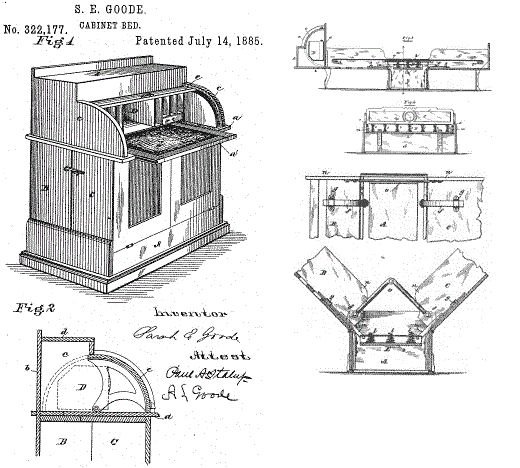
In the world of culinary delights, aioli, a luscious garlic-infused sauce, boasts a rich history originating from ancient Rome. This versatile Mediterranean condiment has evolved over centuries, taking on various forms and names in different regions. Originally made by mashing garlic with olive oil, modern variations abound, including black garlic and truffle aioli. As it continues to captivate taste buds worldwide, traditional aioli remains a testament to the enduring appeal of simple ingredients in creating timeless dishes.
An incident that supposedly occurred in 1959 at Tokyo's Haneda Airport. The man, who claimed to be a citizen of a non-existent country called Taured, presented baffling documents, including a passport with stamps and currency from various European nations. Airport authorities were perplexed and detained him for further investigation due to the absence of records confirming the existence of Taured.
The story takes a curious turn as the man from Taured vanishes from a guarded hotel room overnight, leaving authorities bewildered. The post explores various theories to explain this perplexing case, including the possibility of an elaborate hoax, interdimensional travel, time slips, or government cover-ups.
The ancient Persian "Yakhchāl," a pre-modern refrigeration system dating back to 400 BC. It preserved ice and provided cooling in a desert climate. The Yakhchāl's dome-shaped structure used clever design to maintain a low temperature by allowing airflow. It played a crucial role in preserving food and still stands in Iran today.
Sin-eaters, mysterious figures from history and folklore, played a unique role in absorbing the sins of the deceased through ritualistic acts, primarily in medieval Europe. Associated with marginalized individuals, sin-eating involved symbolic consumption of food to purify the departed soul. This practice had roots in ancient civilizations and religious traditions.
Wales, England, Scotland, and Ireland each had variations of sin-eating customs. With the rise of Christianity and changing beliefs, sin-eating gradually faded by the early 20th century. Nevertheless, its enduring legacy continues to inspire discussions on guilt, redemption, and moral responsibility in modern times.
Delve into Japanese folklore, specifically the world of Yokai, with a special focus on Tsukumogami. These are objects that gain spirits or sentience after a century of existence.
At night, Tsukumogami come alive, engaging in playful or mischievous activities, but can also become hazardous if neglected by their owners. These stories impart moral lessons about respecting the inanimate objects that have served us.
The Japanese tradition of "susuharai" involves discarding aging items to avoid the misfortune associated with Tsukumogami nearing their centennial mark. In the past, Shinto shrines conducted ceremonies to appease these objects, and in Japan, sacred objects are as numerous as cherry blossoms in spring.
During World War II, military innovation was at its peak, and the Excelsior Welbike emerged as a remarkable solution to enhance the mobility of airborne forces. This compact, air-droppable motorcycle, born from the minds of Harry Lester and Lieutenant Colonel John Dolphin, offered rapid deployment capabilities and played a crucial role in reconnaissance missions.
Learn about its development, deployment, and legacy as we delve into the fascinating history of the Welbike motorcycle.
Operation Mincemeat was a remarkable and highly successful World War II deception plan executed by British Intelligence. It involved the use of a deceased homeless man, Glendwr Michael, whose identity was transformed into that of a fictitious British military officer, Major William Martin.
The operation included planting counterfeit documents, love letters, and personal items on the body to create a convincing backstory. The goal was to mislead the Germans into believing that the Allies would attack Sicily while planning an actual invasion of nazi-controlled Greece. This strategic deception played a pivotal role in diverting German forces, ultimately contributing to the Allied victory in Sicily and hastening the end of the war.
Leonardo da Vinci's Automaton Knight, a lesser-known masterpiece of this polymath, showcases his extraordinary engineering prowess and visionary thinking. Commissioned by the Duke of Milan in 1495, this humanoid robot could perform intricate movements with its limbs, powered by intricate systems of pulleys and gears.
Rediscovered in the 1950s, its blueprints were deciphered by modern robotics expert Mark Rosheim, leading to the construction of a working prototype. Leonardo's Automaton Knight bridges art and science, inspiring today's robotic advancements and demonstrating the timeless nature of innovation.
Snake Island, located off the coast of Brazil, is a deadly place due to its population of Golden Lancehead Vipers, highly venomous snakes. While its history is shrouded in legends of pirates, its true origins remain uncertain.
The island is closed to the public, only accessible to authorized researchers. The unique ecosystem has led to the evolution of these vipers, making them distinct predators.
Additionally, there's an illegal black-market trade for these vipers, driven by those seeking the exotic and potentially the medical and pharmaceutical industry. Snake Island remains a mysterious and perilous natural wonder.
The invention of the wheel emerges as a remarkable human achievement, essential for the advancement of civilizations. Wheels are integral to various aspects of daily life, such as farming and construction.
The Ljubljana Marshes Wheel, discovered near Slovenia's capital, is a key focus. It is the oldest known wooden wheel, approximately 5,150 years old, boasting a 72-centimeter diameter and a 124-centimeter-long oak handle.
The wheel's ingenious tenon arrangement allowed the wheel and axle to rotate together. Found scorched and covered in ash, it was excavated from a protected UNESCO World Heritage Site, revealing the region's ancient settlements dating back to 9,000 years ago. The discovery contributes to understanding the simultaneous development of the wheel in Europe and Mesopotamia. Today, the Ljubljana Marshes Wheel is showcased at the City Museum of Ljubljana, serving as a tangible link to our ancient technological accomplishments.
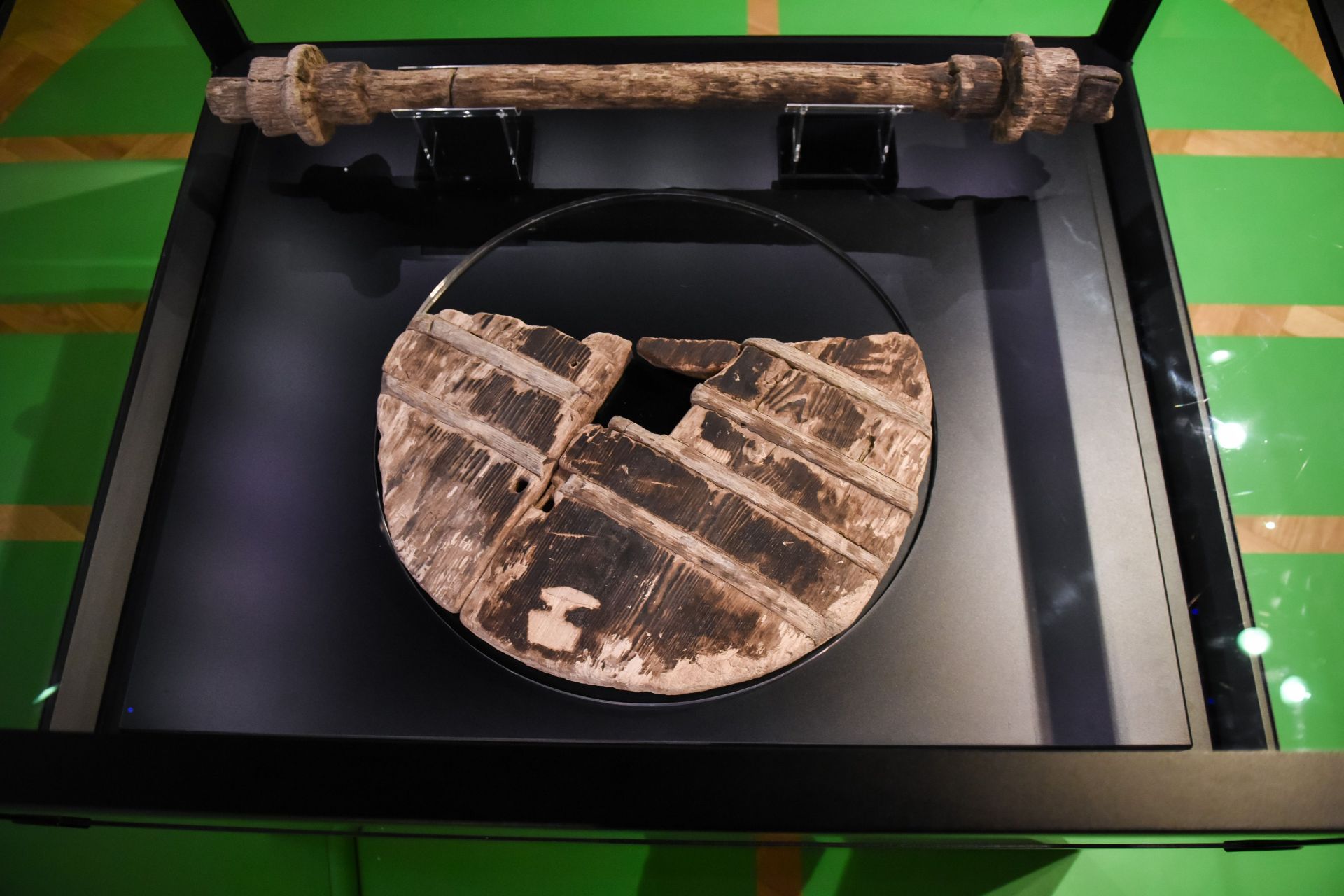
Initially, grave robbery was motivated by a desire to steal valuable possessions from the deceased, leaving the bodies undisturbed. Over time, during the Middle Ages, this practice transformed into body snatching, with documented cases dating back to 1319. Even figures like Leonardo da Vinci may have conducted secret dissections on corpses for their anatomical studies.
The 18th and 19th centuries saw a significant demand for human cadavers by medical schools in Britain and the United States. "Resurrectionists" and "Night Doctors" would scour poor neighborhoods for fresh corpses to fulfill this demand. Renowned anatomist Robert Knox played a notable role in the frequent dissection of recently obtained bodies, contributing to the advancement of anatomy studies.
A thriving black market emerged around body snatching, with corpses even being shipped to the United States for experimentation. The article highlights the notorious case of Burke and Hare, who went as far as committing murders to provide fresh bodies for medical establishments.

Initially, authorities turned a blind eye to body snatching due to its contribution to medical knowledge. However, the Murder Act of 1752 marked a change by directing murderers' bodies to medical practitioners for dissection. Public unrest and riots often accompanied public executions, driven by the belief that incomplete burials could lead to the dead rising.
To counter body snatching, iron cages called "Mortsafes" were introduced to protect graves. Families often rented these due to their cost. Eventually, the Anatomy Act of 1832 allowed physicians and medical students to legally obtain corpses for dissection, thereby ending the illegal corpse trade.
The article delves into the fascinating story of Akhenaton and his Sacred Family, an ancient Egyptian concept that predates the Christian Holy Family by more than a thousand years. Akhenaton, who ruled Egypt over 3,300 years ago as Amenhotep IV, embarked on a groundbreaking journey to reshape Egypt's religion, politics, and art. He advocated for the exclusive worship of the sun god Aton, even adopting the name Akhenaton to reflect his divine role.
Central to Akhenaton's reforms was the establishment of a sacred family, featuring his influential wife, Nefertiti, and their six daughters. Unlike traditional depictions of Egyptian royalty, this family was portrayed basking in the divine light of the Aton, symbolizing their connection to the sun god.
Despite facing opposition from both traditionalists and political rivals, Akhenaton's legacy endures as a testament to his unwavering determination to transform Egypt's cultural and spiritual identity. Moreover, historians speculate that this ancient Egyptian concept may have influenced the Christian Holy Family, highlighting the enduring impact of Akhenaton's vision on religious narratives.
The history of Kellogg's cereals is a fascinating journey that began in 1906 and has since become synonymous with breakfast in many households around the world. The invention of Kellogg's cereals was driven by a combination of health concerns, innovation, and entrepreneurial spirit.
The accidental discovery of corn flakes in 1894 changed the course of breakfast history. The Kellogg brothers, experimenting with grains, left boiled wheat out overnight, and when they rolled it the next morning, it formed flakes. This led to the creation of the first version of corn flakes.
In 1905, after a dispute with his brother John over the recipe (Will wanted to add sugar), Will Keith Kellogg founded the Battle Creek Toasted Corn Flake Company, which later became Kellogg's. He invested heavily in advertising and marketing, irking his brother.
The rivalry between the brothers continued, resulting in a decade-long legal battle. Will eventually emerged victorious, gaining control of the money his brother had earned from cereal sales over the past ten years.
Ancient Egypt thrived as a civilization from 3300 to 525 B.C.E. Within this fascinating culture, medical practices were deeply intertwined with spiritual beliefs. The ancient Egyptians believed that life and health were influenced by gods, demons, and spirits. This intricate belief system led to the concept that these spiritual entities could block the body's channels, affecting its function and causing disease.
In their pursuit of well-being, Egyptian doctors employed a blend of prayer and natural remedies to unblock these channels. Interestingly, most healers were also priests, underscoring the spiritual nature of healing. Over time, a distinct profession of "Neru Phuyt", or "medical doctor", emerged from the priestly ranks. Remarkably, the ancient Egyptian medical literature remains among the oldest documented medical knowledge known today.

Egyptians used a base 10 system with symbols for 10 multiples. Symbols allowed flexible reading directions. Hieratic symbols evolved for numbers 1-10.
Zero in Egypt had no numerical value but influenced numbers when added. It was also used in architecture.
Egyptians represented fractions, mainly with a numerator of one (1/x). Special hieroglyphs existed for 1/2, 2/3, and 3/4.
The Sacred Triangle of Egypt, with side lengths 3, 4, and 5 units, adhered to the Pythagorean Theorem and aided pyramid construction.
Formulas like c=2(a-b) and a=2c-b calculated the Sacred Triangle. Practical use included creating right angles for pyramids.
Notable pyramids, like Khafre, were constructed using Sacred Triangle principles with an inclination angle of 53° 07′ 48″.
Human ritual sacrifice was a chilling practice in ancient China, where people were ceremonially slaughtered as offerings to gods, supernatural beings, or ancestors.
This gruesome practice spanned millennia, with archaeological evidence dating back to the Shang Dynasty (1600 B.C. to 1050 B.C.). Monarchs and nobles sacrificed humans and animals to appease deities and ancestors. Even more horrifying, men and women were drowned, and slaves were buried alive alongside their masters.
The era of human sacrifice eventually came to an end due to the efforts of enlightened intellectuals and rulers. Duke Xian of Qin outlawed the practice in 384 BCE, marking a significant turning point.
This blog might contain posts that are only visible to logged-in users, or where only logged-in users can comment. If you have an account on the system, please log in for full access.